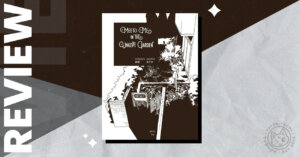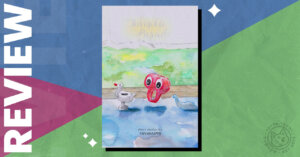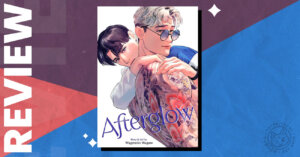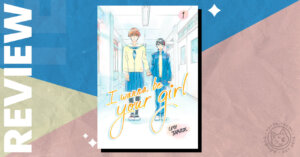Koyuki is a teen newlywed in an arranged marriage with Shin, a man approaching 40 years old. Shin is quiet, sweet, and wears a fox mask at nearly every moment of his life. As an exorcist, he’s attuned to the spirit world that exists largely invisible to humans, and he attempt to open Koyuki’s eyes to the supernatural. Koyuki tries her best to be what she believes to be an ideal wife to Shin despite the huge gap between their life experiences. The gap may not be quite as large as she thinks, however, and the more time they spend together awkwardly fumbling through married life, the clearer this becomes.
NeNeNe is a single volume manga written by Shizuku Totono and drawn by Daisuke Hagiwara. This is Totono’s first work published in English, but fans may know Hagiwara as the artist of Horimiya, which has been running in English for some time now.
The Elephant in the Room
A potential sticking point for many readers is baked into NeNeNe‘s premise: The story opens on Koyuki’s wedding day, where she is forced to marry a man she barely knows who’s over 20 years older than her. Neither of their ages are ever clearly stated, but you can guess that Shin is in his late 30’s and Koyuki is probably 15 or 16.
The impact is lessened a bit by its historical setting. The time period the story takes place in isn’t clearly stated either, but based on some background details, it’s probably in the early 1900’s. During this time, arranged marriages absolutely still happened, often for political or financial reasons. It also wasn’t uncommon for age gaps between spouses to be huge, or for girls to be married off quite young.
Koyuki’s father threatening, within the first few pages, to rip Shin’s spinal cord from his living body if he lays a finger on Koyuki before she turns 20 also lets the reader know that nothing untoward will happen, but if you can’t get behind an adult in a relationship with a teenager no matter what, I don’t blame you. If that doesn’t faze you, you may still find something to enjoy here.
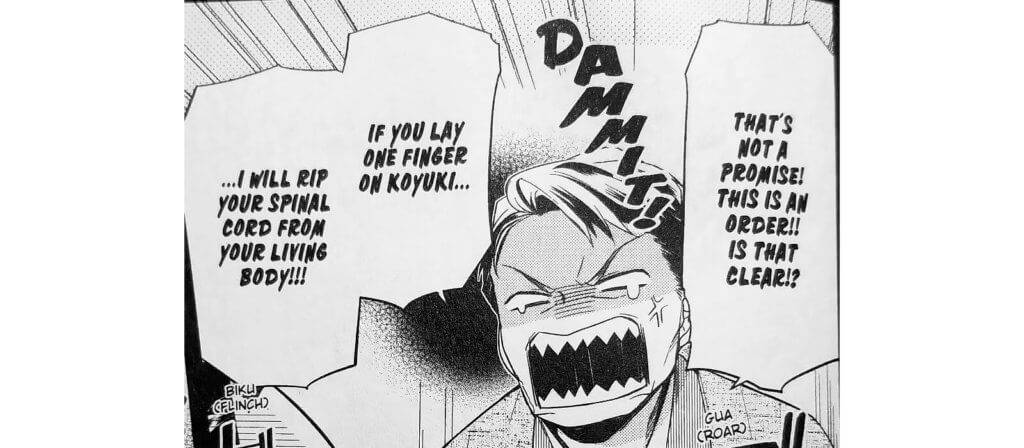
The Good
Hagiwara’s art is simple but attractive. They do a good job of making Shin look appealing and expressive, even though half of his face is constantly hidden. Koyuki is always cute, but especially when she’s flustered or upset — which happens a lot — and which Hagiwara seems to put special effort into. The translation reads smoothly, with no awkward phrasing or typos to speak of, and I appreciated the inclusion of color pages in the middle.
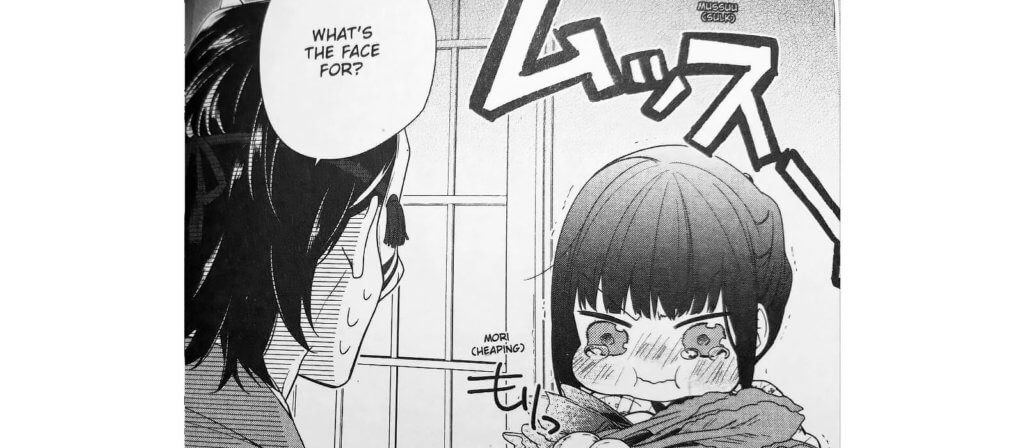
The Not As Good
While the book is visually nice, as far as literary meat goes it’s pretty lean. Koyuki gets the most effective characterization. She’s developed an idea of what a good wife should do and be, but has no experience with romance. Her idealized vision of marriage, what she’s actually capable of, and what she and Shin want out of their relationship don’t always line up, and the book spends much of its time watching her try to resolve these differences.
It also spends a fair amount of time in Shin’s point of view, but by the end he’s still kind of an enigma. He’s shy and awkward, not the wise adult Koyuki assumes him to be at the start. We also know that, due to his spirit vision abilities, he was the town pariah as a kid and slept in a shed. But in the story’s present he’s well-liked and well-known by the people in town, with no explanation of what changed.
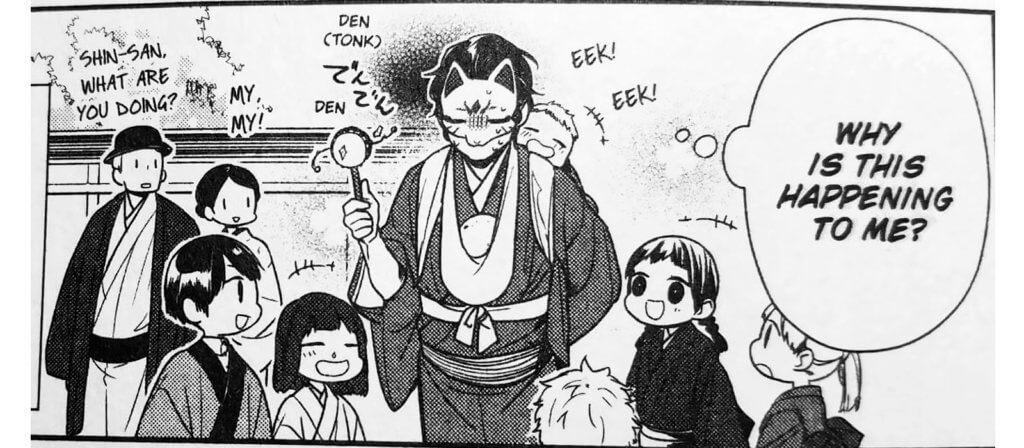
And that’s one of several plot threads left dangling by the book’s end. The only other major character, Shouta, is a neighbor boy about Koyuki’s age. He falls in love with her at first sight, is disappointed to learn she’s already married, and never shows up again. Shin’s teacher sends him and Koyuki a dragon egg. The teacher is never brought up again. The mystery of Shin’s face is referenced constantly but never resolved. I don’t know the serialization history of this manga, but given its short length and all the unresolved plot points, it sure feels like something that got axed before it could get going.
The Kinda Pointless
What bothers me the most, though, isn’t the stunted plot, but that the whole setting basically doesn’t matter. The supernatural elements and the age gap, the two most important worldbuilding elements, have almost no bearing on the characters or plot. Shin acts like an awkward teen, flustered at the slightest touch of Koyuki’s hand, and their romance plays out like any number of awkward teen romances across the history of manga. He doesn’t even look that old; Koyuki’s just small. As it is, the age gap feels mostly tacked on to add a slight air of taboo and danger to an otherwise mundane story.
The same goes for the supernatural elements. They see a fairy, they have a little pet dragon, and that’s it. The supernatural is used mostly as an excuse to draw cute things happening. Shin’s abilities are the reason for his outsider status, but since nothing is ever done with that outsider status, it might as well not be included, and the supernatural as a whole might as well not be either. The exact same story could be told just as well, and possibly more concisely and effectively, between two ordinary teenagers.
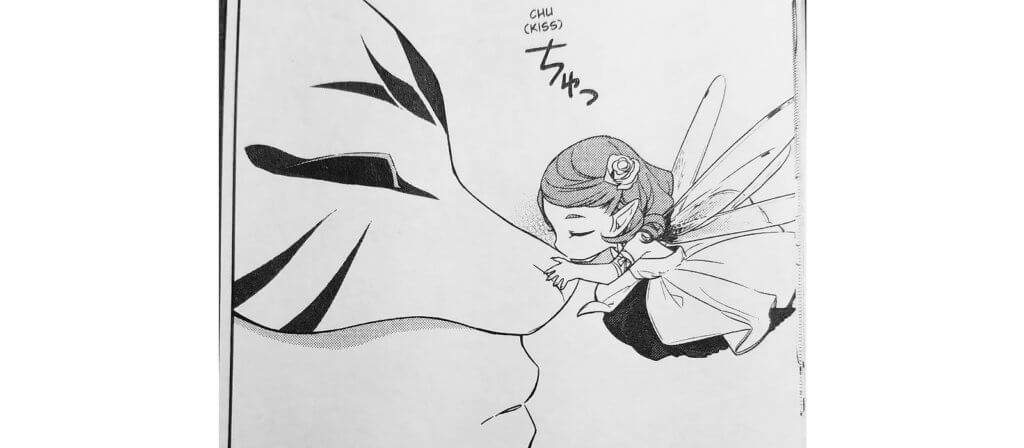
The Verdict
It might sound like I’m being hard on it, but I still liked NeNeNe well enough. It’s a cute and breezy read with good art and endearing, if underdeveloped, characters. It just feels a little disposable, especially given its length. But if you’re a fan of the creators, supernatural romance, or age gap romance, it’s worth a look.
You can read more about NeNeNe at Anime-Planet and order it on Amazon and RightStuf. Special thank you to Yen Press for giving us the opportunity to review this manga.

Featured Sponsor - JAST
The sweetest romance and the darkest corruption, the biggest titles and the indie darlings; for visual novels and eroge, there's nowhere better.
Big thank you to our supporters
From their continous support, we are able to pay our team for their time and hard work on the site.
We have a Thank-You page dedicated to those who help us continue the work that we’ve been doing.
See our thank you page


